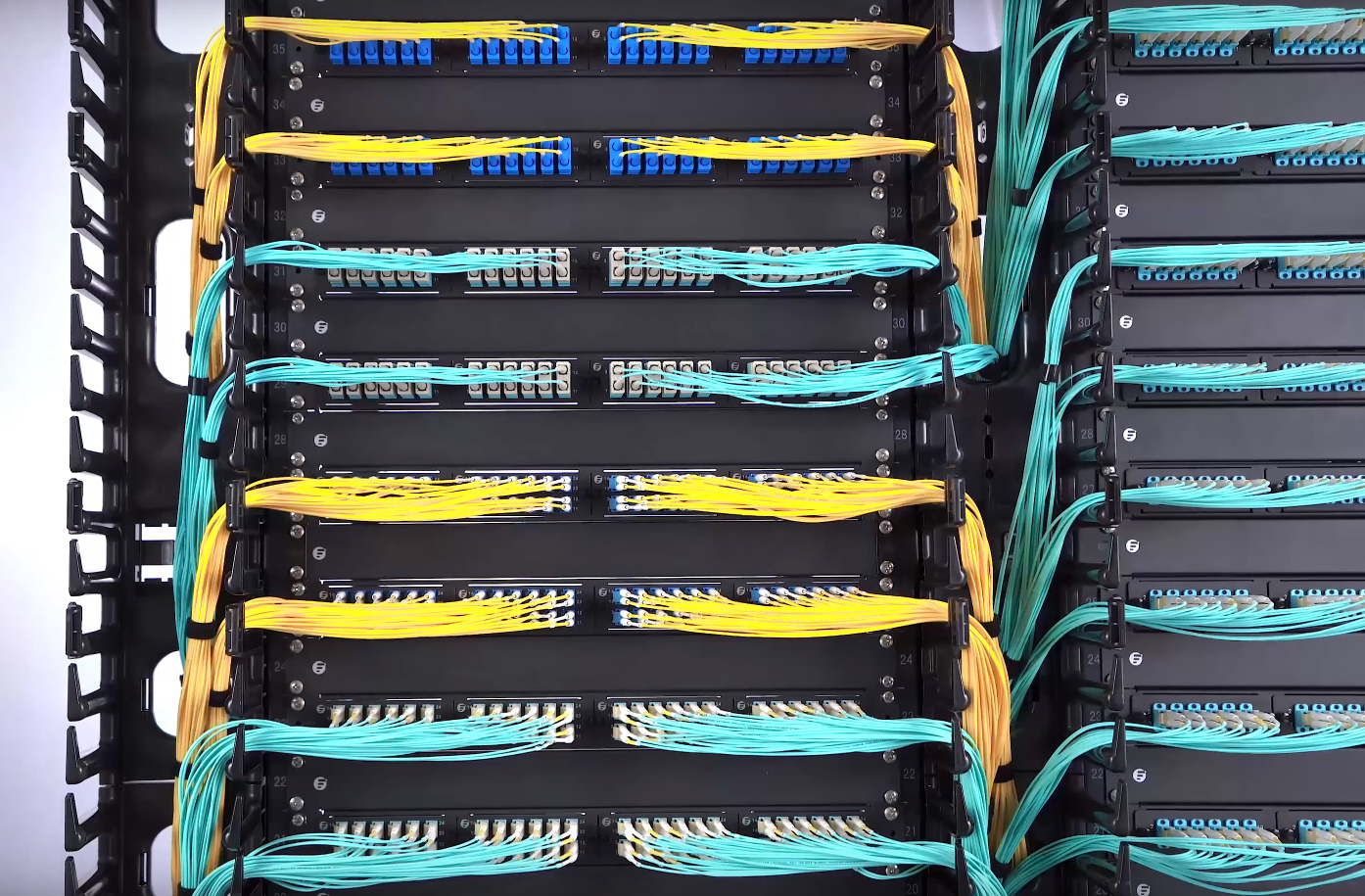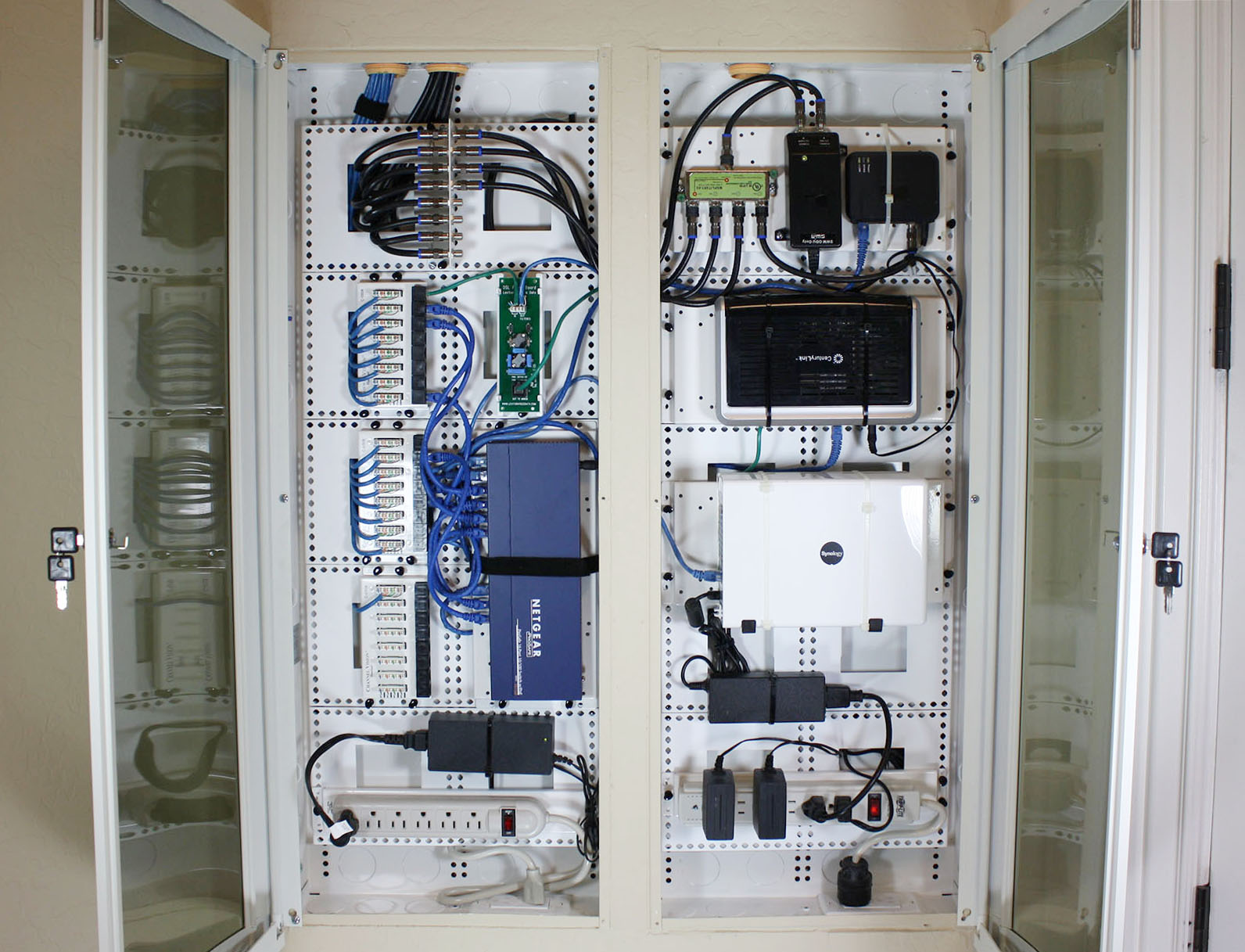Home Patch Panel Cabinet

In the realm of home networking, where data flows seamlessly through cables and devices, organization and management play a crucial role in ensuring optimal performance and reliability. A home patch panel cabinet emerges as a vital component, acting as the central hub for organizing and managing network cables, simplifying network maintenance, and enhancing overall network efficiency.
Key Features and Benefits
A home patch panel cabinet offers a plethora of features and benefits that contribute to a well-structured and efficient network.
- Centralized Cable Management: Patch panels provide a dedicated space for terminating and organizing network cables, eliminating cable clutter and promoting a neat and tidy network infrastructure. This centralized approach simplifies troubleshooting and future modifications, making it easier to identify and access specific cables.
- Enhanced Network Performance: By organizing and managing network cables effectively, a patch panel cabinet minimizes signal interference and crosstalk, leading to improved data transmission rates and reduced network latency. This translates to faster internet speeds, smoother online gaming experiences, and more reliable streaming.
- Improved Network Reliability: Patch panels facilitate easy cable replacement and upgrades, allowing for quick repairs and maintenance without disrupting network connectivity. This ensures a reliable network that can withstand potential cable failures or upgrades, minimizing downtime and ensuring continuous network availability.
- Scalability and Future-Proofing: Patch panels provide ample space for future network expansion, accommodating additional devices and network services. This flexibility allows for a future-proof network that can adapt to evolving technology and changing home networking needs.
Practical Examples
Imagine a home office with multiple computers, printers, and network devices. Without a patch panel cabinet, cables would likely be tangled and difficult to manage, leading to potential connectivity issues and time-consuming troubleshooting. However, with a patch panel cabinet, all network cables are neatly organized and terminated, simplifying network maintenance and troubleshooting.
Another example is a home entertainment system with multiple TVs, gaming consoles, and streaming devices. A patch panel cabinet allows for easy connection and management of all devices, ensuring seamless streaming and a clutter-free entertainment setup.
Types of Patch Panels
Patch panels are available in various configurations and sizes, catering to different home networking needs.
- Standard Patch Panels: These are the most common type of patch panels, typically featuring 12, 24, or 48 ports. They are suitable for most home networks and offer a balance between functionality and affordability.
- Modular Patch Panels: Modular patch panels offer greater flexibility, allowing users to customize the number and type of ports based on their specific requirements. They are ideal for expanding networks or accommodating specialized devices.
- Wall-Mounted Patch Panels: These compact panels are designed for space-saving installations and are perfect for smaller home offices or apartments. They offer a convenient and discreet way to manage network cables.
Selecting the Right Home Patch Panel Cabinet

A home patch panel cabinet is an essential component for organizing and managing your home’s network infrastructure. Choosing the right cabinet can significantly impact the efficiency, scalability, and aesthetics of your network setup.
Understanding Essential Factors
When selecting a home patch panel cabinet, several key factors need consideration to ensure a suitable and functional solution. These factors include:
- Size and Capacity: The size and capacity of the cabinet are crucial considerations. Determine the number of network devices, cables, and patch panels you need to accommodate. A larger cabinet provides ample space for expansion, while a smaller cabinet might be sufficient for a basic setup.
- Mounting Options: Home patch panel cabinets come in various mounting options, including wall-mounted, rack-mounted, and freestanding. Wall-mounted cabinets are space-saving and ideal for smaller setups. Rack-mounted cabinets offer greater organization and are suitable for larger installations. Freestanding cabinets provide flexibility and can be placed anywhere in your home.
- Material and Durability: The material and durability of the cabinet are important for longevity and protection. Cabinets made from sturdy materials like metal or high-quality plastic offer greater durability and resistance to wear and tear.
- Ventilation: Adequate ventilation is essential to prevent overheating, especially in cabinets housing multiple network devices. Look for cabinets with ventilation slots or fans to ensure proper airflow.
- Aesthetics: While functionality is paramount, aesthetics also play a role. Consider a cabinet that complements your home’s décor and blends seamlessly with your existing setup.
Understanding Different Mounting Options
The mounting option you choose will significantly influence the installation and overall layout of your home patch panel cabinet. Here’s a breakdown of the key differences:
- Wall-Mounted Cabinets: Wall-mounted cabinets are a popular choice for their space-saving design. They are ideal for smaller setups where space is limited. These cabinets typically have a shallow depth and can be easily mounted on walls.
- Rack-Mounted Cabinets: Rack-mounted cabinets offer greater organization and are suitable for larger installations. They provide a standardized framework for mounting network devices, patch panels, and other equipment. Rack-mounted cabinets come in various sizes, allowing you to choose one that meets your specific needs.
- Freestanding Cabinets: Freestanding cabinets offer flexibility and can be placed anywhere in your home. They are typically larger than wall-mounted or rack-mounted cabinets and provide ample space for housing network equipment.
Selecting the Right Patch Panel Cabinet
Follow these steps to choose the appropriate patch panel cabinet for your home networking requirements:
- Assess your networking needs: Determine the number of network devices, cables, and patch panels you need to accommodate. Consider your current and future needs to ensure the cabinet has enough capacity.
- Choose a mounting option: Decide whether you need a wall-mounted, rack-mounted, or freestanding cabinet based on your space constraints and the size of your network.
- Consider the size and capacity: Select a cabinet that is large enough to accommodate your equipment and has enough space for future expansion.
- Check the material and durability: Choose a cabinet made from sturdy materials like metal or high-quality plastic for longevity and protection.
- Ensure adequate ventilation: Look for cabinets with ventilation slots or fans to prevent overheating.
- Consider aesthetics: Choose a cabinet that complements your home’s décor and blends seamlessly with your existing setup.
Comparing Cabinet Types
Here’s a comparison table highlighting the pros and cons of different cabinet types and their suitability for various scenarios:
| Cabinet Type | Pros | Cons | Suitable for |
|---|---|---|---|
| Wall-Mounted | Space-saving, easy to install, affordable | Limited capacity, may not be suitable for larger setups | Small home networks, basic setups |
| Rack-Mounted | Highly organized, scalable, suitable for larger setups | Requires more space, can be more expensive | Large home networks, server rooms, data centers |
| Freestanding | Flexible placement, ample space, can be customized | Takes up more floor space, can be more expensive | Large home networks, home offices, dedicated network rooms |
Implementing a Home Patch Panel Cabinet

Installing a home patch panel cabinet is a rewarding endeavor that enhances your home network’s organization and efficiency. This guide provides step-by-step instructions for a seamless installation, cable management, and optimal network performance.
Preparing for Installation
Before embarking on the installation, gather the necessary tools and materials. A well-equipped toolkit ensures a smooth and successful process.
- Patch panel cabinet
- Network patch cables
- Cable ties and zip ties
- Screwdriver
- Wire strippers
- Crimping tool
- Network tester
- Level
- Drill
- Measuring tape
- Safety glasses
- Gloves
Home patch panel cabinet – Choosing the right location for your patch panel cabinet is crucial. Consider factors such as proximity to your network devices, ease of access, and aesthetics. Ensure the location is well-ventilated and protected from moisture and extreme temperatures.
Installing the Patch Panel Cabinet
- Select a suitable location and mark the mounting points on the wall. Ensure the patch panel cabinet is level before drilling pilot holes.
- Secure the patch panel cabinet to the wall using appropriate screws and anchors. Tighten the screws securely to ensure stability.
- Install the patch panel inside the cabinet, following the manufacturer’s instructions. Ensure the patch panel is securely mounted and properly aligned.
Connecting Network Devices
Once the patch panel cabinet is installed, connect your network devices. This involves terminating network cables and labeling them for easy identification.
- Connect network cables to the patch panel ports. Use high-quality network cables and ensure they are properly terminated.
- Label each cable and port with clear and concise labels. This helps identify connections quickly and easily.
- Connect the other end of the cables to your network devices, such as routers, switches, and computers.
Cable Management Techniques
Efficient cable management is essential for a clean and organized patch panel cabinet. Employing proper techniques prevents clutter and ensures optimal airflow.
- Use cable ties and zip ties to bundle cables together neatly. This prevents tangling and keeps the cabinet organized.
- Utilize cable management accessories, such as cable trays, hooks, and clips, to further enhance organization and streamline cable routing.
- Leave enough slack in the cables to allow for easy access and future modifications. Avoid over-tightening cable ties, which can damage cables.
Organizing and Managing Cables, Home patch panel cabinet
Organizing cables within the patch panel cabinet ensures efficient airflow and prevents clutter. This improves network performance and enhances the overall aesthetics of the setup.
- Group cables by device or function to simplify identification and troubleshooting.
- Use color-coded labels to differentiate between different cable types or network segments.
- Avoid crossing cables over each other to prevent signal interference and maintain a clean appearance.
Testing the Connections
After connecting your network devices and managing cables, it’s essential to test the connections to ensure everything is functioning correctly.
- Use a network tester to verify connectivity between devices and the patch panel.
- Check data transfer speeds to ensure optimal performance.
- Test internet connectivity to confirm proper internet access.
Troubleshooting Common Issues
Troubleshooting common issues can help you resolve connectivity problems quickly and efficiently.
- Verify that all cables are properly terminated and connected securely.
- Check for any loose or damaged cables that might be causing signal interference.
- Ensure the patch panel cabinet is properly grounded to prevent electrical hazards.
Best Practices for Patch Panel Cabinet Maintenance
Regular maintenance ensures optimal performance and longevity of your home patch panel cabinet.
- Inspect cables and connections regularly for any signs of wear or damage.
- Clean the cabinet and its components periodically to remove dust and debris.
- Ensure adequate ventilation to prevent overheating and ensure optimal airflow.
You know how sometimes you just need a dedicated space for all your networking gear? That’s where a home patch panel cabinet comes in handy. And while we’re on the topic of organizing, have you seen the ikea lillangen bathroom wall cabinet ?
It’s perfect for keeping your toiletries and towels neat and tidy. Just like a patch panel cabinet keeps your cables in check, that IKEA cabinet keeps your bathroom organized!
Setting up a home patch panel cabinet can be a great way to organize your home network, but it’s not quite as glamorous as displaying your heirloom china in a fine furniture china cabinet. While one keeps your tech tidy, the other showcases your family’s history.
Both, however, serve a purpose and add a touch of organization to your home.
